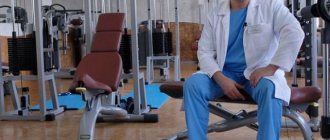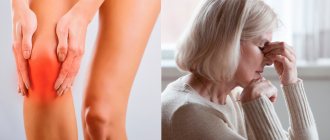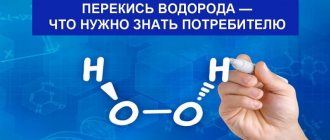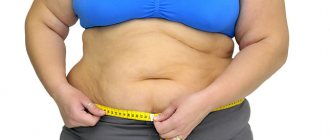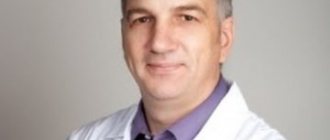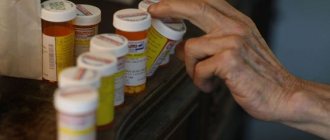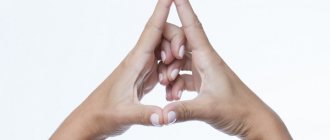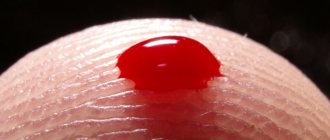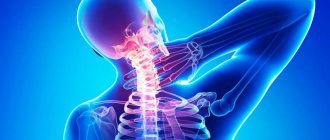Hypertension is one of the most serious diseases of the cardiovascular system, which does not allow the patient to lead an active lifestyle. But completely refusing physical activity only worsens the situation. Especially for people suffering from high blood pressure, Dr. Bubnovsky offers a complex of therapeutic exercises.
This article provides information about the importance of physical activity for treatment, talks about the essence of Dr. Bubnovsky’s complex and its positive effect on the patient’s body, as well as the types and forms of training.
Specifics of pathology and the importance of physical activity
Hypertension is a specific vascular pathology in which excessive activity leads to the development of a crisis and serious consequences. To stabilize the patient’s condition and prevent complications, doctors recommend moderate physical activity.
Concept of GB
With constant exercise under the supervision of a physician, hypertensive patients experience favorable changes in the dynamics of the heart. Due to oxygen saturation, the likelihood of stress and, accordingly, exacerbation of the disease is reduced.
Even a regular walk for an hour promotes the production of special hormones aimed at regulating the functioning of the circulatory system and improves the body's endurance. Over time, the patient notes a decrease in the level of fatigue.
Who is this and why can you listen to him?
Sergey Mikhailovich Bubnovsky is a famous rehabilitation doctor.
Doctor of Medical Sciences, professor, founder of a whole area of modern kinesitherapy. Author of more than 50 scientific articles on the benefits of physical education for diseases of the cardiovascular system and spinal diseases. Developer of 10 methods of treating the musculoskeletal system using strength training equipment. While working as a doctor at the Paris-Dakar Rally, he came up with a method for non-surgical treatment of compression fractures in rally pilots.
All Bubnovsky’s developments are very popular among patients. This is due to the fact that Sergei Mikhailovich himself had been in the patients’ shoes before and was cured using his own proprietary methods. In his youth, he became deeply disabled and only hard work on himself brought him back to his feet.
The essence of the method and indications
Exercises for hypertension according to Bubnovsky are prescribed to reduce blood pressure, eliminate vasospasm, and are indicated for patients at different stages of the disease. The development of the complex is based on the use of all internal forces of the body.
Advantages of the method:
Availability. Classes do not require a specific time, the purchase of various equipment, or a special place. Do the exercises at home at a convenient time.- Combination. Complements drug therapy, enhances the effect of treatment, and sometimes can replace the medicinal method.
- Productivity. After the first exercises, the patient notices an improvement in well-being, the exercises strengthen the immune system and get rid of lethargy.
- Versatility. Suitable for anyone, regardless of skill level.
There are different workouts for different degrees of the disease:
- breathing exercises;
- gentle exercises;
- aerobics;
- regular workout.
Depending on the degree of the disease, two types of exercises are distinguished:
- Dynamic, designed to normalize pressure.
- Isometric, involve the use of special devices.
Important! To choose the type of training, you need to consult a doctor, who will also select the individual intensity and number of repetitions of each exercise.
It is advisable to periodically measure the pressure and note it in a specially kept notebook. If there are signs of deterioration, stop training.
When performing exercises, you must adhere to the general rules:
- exercise on an empty stomach, before meals, since with a full stomach the effectiveness of the workout will be insignificant;
- The lesson time is set from 10-15 minutes with a gradual increase in duration;
- do not exercise when you are weak, overpowering yourself, such actions can cause even more harm;
- focus your efforts not on the number of approaches, but on the correct execution technique, since there is no benefit from incorrect repeated training;
- do not quit classes after the first signs of improvement appear;
- After finishing the workout, be sure to take a shower and drink water or mint tea.
To achieve lasting results, you need to review your diet, give up unhealthy foods, and follow a daily routine.
The essence of his treatment method
Dr. Bubnovsky believes that hypertension is not only possible, but also necessary to be treated with physical exercise. The human body consists of three parts, floors, as Bubnovsky calls them. On the first floor there are the feet, legs and pelvis, on the second – the stomach, chest and back, and on the third – the shoulders, neck and head. 70% of all blood collects in the vessels of the lower extremities.
In a person with high blood pressure, blood flows to the legs without problems, but it returns upstairs, to the second and third floors, with great difficulty. The heart and brain lack oxygen and are forced to work at an accelerated rate.
Antihypertensive drugs help alleviate the patient’s condition only for a short period of time, then the situation repeats again. To avoid a hypertensive crisis, the patient must regularly take antihypertensive drugs, and they are known to have many side effects.
Physiologists call the leg muscles the peripheral heart. The lower leg muscles work on the principle of a pump; they push blood up through the vessels and eliminate congestion. If you do gymnastics regularly, blood circulation returns to normal and, accordingly, the pressure decreases, the symptoms gradually disappear and the patient feels better.
According to Bubnovsky, special exercises will help minimize the amount of synthetic drugs in the treatment regimen for hypertension, as well as improve the patient’s well-being.
Set of training exercises
The complex includes exercises for all parts of the body: walking, push-ups, abs, squeezing the ball, arching
Gymnastics stages:
- The training begins with walking, changing the method of movement every five steps: on the heels, on the toes, step by step, step with legs crossed. Breathing is kept at the same level without changing the pace.
- Tilts. To perform the exercise, you need to bend over, lowering your hands at the level of your heels. At the same time, you should not tilt your head too much in order to avoid dizziness.
They make a “bicycle” for the legs. The patient, sitting on a chair, rests on the seat, then raises his legs and makes movements as when riding a bicycle. Repeat the exercise at least five times, taking breaks for a couple of seconds.- For the shoulders. Sitting on a chair, raise your shoulders and make circular movements with them. Repeat up to 5 times.
- Next is a lifting exercise. Sitting on a chair, spread your legs, exhale and rise up together with the exhalation. When inhaling, you need to sit on a chair.
- Body turns are performed while standing. Place your feet shoulder-width apart, then, moving your arms away, turn in different directions, inhaling at the same time. As you exhale, return to the starting position.
Finish each workout with a cool-down to relax and restore breathing. In a lying position, while taking a deep breath, bend the spine as much as possible, but at the same time keeping the head and tailbone in place. When exhaling, lower the spine to the floor. Movements should be slow and measured.
This breathing exercise is useful for the neck, as it maintains mobility for a long time and relieves pain, including headaches.
Advantages and disadvantages
The gymnastics developed by Dr. Bubnovsky are easy to perform. You don't have to constantly visit the gym; you can do simple movements even while sitting at your desk. Charging requires no effort and will not attract unnecessary attention. Simple exercises relieve tension in the veins, strengthen the walls of blood vessels and improve the functioning of the muscles of the lower leg and neck.
And also read on our website: How is disability given for grade 3 hypertension and what group is prescribed for this disease?
Limitations in physical exercise may affect people who have suffered a heart attack or stroke.
Treatment according to Bubnovsky has no contraindications.
Gentle forms of training
Gentle gymnastics is one of the most difficult forms of training, since all exercises are performed while standing.
Includes:
- Step forward. You need to step forward, raising your hands up, take a deep breath. As you exhale, take a step back.
- Emphasis on the wall. Place your hands against the wall, lean forward, and lift your legs one by one.
- Swing your legs. Place your feet shoulder-width apart, hands on your waist, lift your leg up and move it back.
- Walking with raised arms.
At the end of the complex, a relaxation cool-down is performed, aimed at equalizing the heart rate and relaxation. With regular exercise, it prevents the development of the disease.
Text of the book “Home Health Lessons. Gymnastics without machines. 60 exercises"
So. Squats can do wonders in relieving cardiovascular problems such as hypertension. But they can also frighten you if you “pounce” and try to take them “brazenly”, without taking into account your physical condition. On the one hand, everything ingenious is simple. But simple does not mean primitive! It seems simple - I did some squats and got rid of hypertension. But it was not there. It's just a pill to swallow. Squats as a treatment is a system that involves all the muscles of the body - the lower limbs, pelvis, back and even the upper limbs. It also includes: a well-timed “Haa” exhalation (when extending the legs), the quantity and quality of squats, a pause between series of 5 or 10 squats, and even water procedures (pouring cold water) at least for the legs. Everything needs to be monitored and everything needs to be done regularly, which is no longer easy...
But the game is worth the candle!
As a result (after several months) the patient receives:
1. Improving the speed and volume of blood flow.
2. Improving the elasticity of blood vessels.
3. Decrease in peripheral vascular resistance of the lower extremities.
4. Decrease in diastolic pressure (the so-called lower).
Gradually, the myocardium gets used to the new rhythm of blood ejection into the aorta, the volume of which increases due to an increase in diastole, and the body’s self-regulation is simultaneously restored and the need for the use of antihypertensive drugs disappears. Just? Yes! But you should follow all the “safety” rules for proper squats
, stated above.
What does the tablet do?
It worsens the elasticity of the vascular wall, since the pressure decreases (temporarily) due to chemical irritation of the vascular wall, simultaneously turning off the body’s self-regulation, “hooking” the person on the “needle” of the pill.
It creates in a person a lack of confidence in the strength of his own body, including “fear for the heart.”
By creating the illusion of improved well-being, it smoothly leads a person to arrhythmia, then to ischemic heart disease and... It’s better not to talk about it...
By the way, how to behave during attacks of arrhythmia, which can also occur during exercises if breathing rules are violated?
You feel the pulse, and it beats intermittently under your fingers - sometimes quickly, then suddenly pauses. As a rule, the impacts of the vascular wall on the fingers are very noticeable. And in this case, it is not the exercises that you should be afraid of, since with arrhythmias the heart asks for help. I advise you to switch to the “pull-over” exercise (see section “III floor - 10 exercises for the upper limbs”). The main thing in this case is ri while simultaneously pulling with your arms from behind your head (IP - lying on your back). The rhythm will gradually recover. I do not recommend squats unless there is atrial fibrillation or flutter (the cardiogram will tell you this). But even in this case, exercises such as squats can be performed strictly under the supervision of a doctor.
I repeat, the most dangerous load for any sick person in the event of his physical failure is not performing exercises (correctly and correctly), but his own body weight, which his muscular system cannot cope with. Everyday stress is sometimes more dangerous than incorrectly performed exercises. It is also harmful to lie there for a long time. There are even “lying diseases” - swelling of the lower extremities and associated orthostatic collapse (this is when a person gets up after lying for a long time and immediately faints), not to mention bedsores and general muscle atrophy.
Cardiologists do not prohibit a seriously ill person – a heart patient – from moving in space! For example, walking to a store, pharmacy, down the street. At the same time, they do not regulate the distance (the main thing is to buy pills...) traveled by their patients. They do not explain that when climbing stairs, a sick person must exhale on each step, straightening his leg at the knee. How many steps he can climb is also a question. It is such everyday stresses that are, in fact, the most dangerous for a seriously ill, physically weakened, overweight person, and not exercises with the correct dosage, control of breathing and pulse. So sick people die in toilets, getting up from the toilet, on the streets, after covering several hundred meters with a bag in their hands and nitroglycerin (validol, corvalol, etc.) in their pocket, not having time to get it out during an attack.
In my practice, there were cases when I saw how a person lost consciousness, quietly slid to the floor, and compassionate people around him tried to shove some pills into the mouth of this man with blue lips and a deathly gray face. He did not swallow because he was unconscious. At such moments, you need to help his heart through the leg muscles. For example, in such cases, I begin to rotate a person who has lost consciousness - bending and unbending his legs, and he comes to life. His face turns red and he asks, “What happened? Why are there people around? Surprised. And there is something. A little more and he would no longer be with us.
Knowing the simple laws of physiology sometimes works wonders. So I tell you these laws... Simple and complex at the same time.
I would like to once again draw your attention to the therapeutic role of exhalation, forced in the phase of tension of the diaphragm.
I am rather indifferent to so-called breathing exercises, although they sometimes (according to stories) work wonders. I don’t think that breathing should be artificially created. It is necessary to learn how to control breathing when performing physical exercises, because the respiratory muscles are voluntary muscles. That is, they are controlled by the volitional center of a person.
The main respiratory muscles are the diaphragm and intercostal muscles. By tensing and relaxing these muscles, you can achieve a reduction in intracranial, intrathoracic and intra-abdominal pressure when performing physical exercises, even very strenuous ones. At the same time, venous blood flow also improves, that is, the respiratory muscles act as a pump.
It is controlled breathing, that is, the “Haa” exhalation, when performing strength exercises that improves the transport function of the muscles of the lower extremities, thereby fulfilling the role of the peripheral heart. This is the healing factor of these exercises. Failure to use these “motor drugs” of the human body, that is, failure to perform strength exercises in an aerobic effect, leads to IHD (coronary heart disease). I can repeat once again: a person “ages” first with his feet! Think about it - gait, posture, fatigue, weakening and prolapse of internal organs occur precisely because of weak legs!
For example, in the flow of people you can easily see those who are over... 60! True, one can make a mistake by mistaking a slender, easily walking woman (from the back), who is already over 70, but involved in the system of active longevity, that is, gymnastics, for a 30-year-old (also healthy...). But in general, the sick and old can be seen by their gait...
We present to your attention exercises, 10 for each joint, which are recommended to be performed from the first floor to the third, that is, going up the floors of the body. You can choose to start with one exercise from each subsection, for example, one exercise from “foot”, one from “knee”, one from “hip”, one from “abdomen”, one from “lower back”, one from “belt” upper extremities” – 6 exercises are obtained. Write these exercises in your journal. One exercise per page. And start performing them “to failure”, that is, until you feel a burning sensation in the muscles of this joint, but at least 20 repetitions.
If you are using a machine (rubber shock absorber), the rules for the number of repetitions are the same, but you can get by with 20 repetitions if you feel a burning sensation in the muscles. When performing an exercise with a machine for more than 20 repetitions, you can change the machine to a tighter one or increase the number of elastic bands in the machine.
People with coronary artery disease and other vascular diseases are not recommended to perform exercises more than 20 repetitions in the first days of training (6-12 classes).
So, patience, work and consistency (regularity) when doing exercises will help you achieve the desired result!
I floor of the body
10 exercises for the knee joint
"Squats"
I.P. standing at the NOP - squats with a straight back, holding the NOP with straight hands (wall bars, high-back chair, door frame, etc.) ( photo 1 a, b
).
Stage 1: level of lowering of the pelvis - thighs are parallel to the floor. Don't lift your heels. Feet slightly wider than shoulder width. Perform in series of 10 squats.
Stage 2: lower the pelvis as deeply as possible ( photo 1 in
).
SM comment:
– cracking and clicking in the knee joints are allowed;
– exhale while straightening the legs – lifting;– after hip replacement, the first three months the exercise is performed according to the rules of the first stage.
I must say that my personal practice shows a frequent discrepancy between the true condition of the joints and the description of radiologists. That is, very often radiologists use the term “arthrosis” instead of “arthritis”.
To identify the truth in this matter, doctors at our Centers use myofascial diagnostics, which is performed manually. If the congruence of the articular surfaces is maintained, that is, with a smooth joint space, the word “arthrosis” is replaced by “arthritis”. In this case, you can squat.
The exercise is essentially aerobic and trains the heart. Replaces walking, cycling, running in its effect. It is better to perform squats in series of 10 or 20 repetitions, noting their number in the self-control diary. At one time I kept such a diary, increasing the number of episodes with each subsequent lesson. It is advisable to achieve the figure of 100 squats in one session (10 series of 10 squats or 5 series of 20 squats).
1a
1b
1c
Contraindications: coxarthrosis (damage to the hip joint), gonarthrosis (damage to the knee joint), hemorrhoids in the acute stage, uterine prolapse.
"Seated hip adduction"
Trainer:[2]2
Rubber shock absorber (bandage).
[Close] is attached to a fixed support by its lower part ( photo 2a
).
I.P. sitting sideways to the LOP (in this case a sofa) at a distance of 2.5–3 meters[3]3
I.P. is allowed lying on your back or sitting, resting on your elbows.
[Close], the working leg with the exercise machine fixed to the lower part of the lower leg or foot is moved as far as possible to the side, that is, the rubber shock absorber should be in a taut state. The other leg is fixed to any stationary object. Bringing (adduction) of the working leg to the “Haa” fixed while exhaling (15–20 repetitions). The same with the other leg ( photo 2 b, c
). The exercise must be performed in sneakers.
SM comment:
Exercise is basic for the prevention and treatment of diseases of the knee joint - such as arthritis and arthrosis. Helps restore its function in case of injuries to the menisci and ligaments. Minor soreness is acceptable. If you experience severe pain, you can reduce the tension on the machine or replace it with a lighter one.
This exercise is also suitable for rehabilitation after knee or hip replacement.
In addition, the exercise has a therapeutic effect for diseases of the pelvic organs - inflammation of the appendages, uterine fibroids, endometriosis in women, prostatitis, prostate adenoma in men.
General indications: irritable bowel syndrome, constipation, hemorrhoids.
The exercise also has a cosmetic effect on cellulite (you need to perform a large number of repetitions - up to 50).
2a
2b
2v
Contraindications: coxarthrosis, impacted fracture of the femoral neck, hemorrhoids in the acute stage, uterine prolapse.
"Seated hip abduction"
I.P. sitting sideways to the NOP (IP is allowed lying on his back), the exercise machine is fixed on the leg farthest from the NOP. Abduction (abduction) of the working leg while exhaling “Haa” as much as possible to the side – 15–20 repetitions. The same with the other leg ( photo 3 a, b
).
SM comment:
The exercise is aimed at restoring the function of the outer side of the knee joint in case of damage to the cruciate ligaments and meniscus. Strengthens the muscles of the hip joint after endoprosthetics. Also, the exercise with a large number of repetitions (from 50) helps fight the so-called “breeches” - fat accumulations on the outer side of the thigh.
Contraindications: coxarthrosis, impacted femoral neck fracture.
"Quadriceps femoris"
I.P. lying on his stomach, the front surface of the thigh on the bolster, the leg bent, the other leg on the floor, head to the NOP. One end of the simulator is attached to the lower ⅓ of the lower leg (or foot), the other is attached to a fixed support by its lower part. Extending the leg to a straight line. 15–20 repetitions with each leg ( photo 4 a, b
). The exercise can be performed in series of 2–3 approaches.
3a
3b
4a
4b
SM comment:
The exercise perfectly stretches the front surface of the thigh, improving its elasticity and eliminating muscle rigidity. Has a decompression effect for the knee joint. It is also used in the treatment and prevention of diseases of the hip joint.
"Biceps hamstrings"
I.P. lying with the front surface of the thigh on a bolster; the other foot is on the floor, feet towards the NOP. One end of the simulator is attached to the lower ⅓ of the lower leg (or foot), the other is attached to a fixed support (door, sofa, etc.) by its lower part. Flexion/traction of the shin towards the thigh. 15–20 repetitions with each leg ( photo 5 a, b
).
SM comment:
The exercise can be classified as power stretching, that is, on the one hand – full stretching of the muscles of the back surface of the leg (thigh/shin), on the other – power traction with the leg muscles.
This is the area of the sciatic nerve and the back of the knee joint. In this regard, the exercise is recommended for the restoration of injured ligaments of the knee joint (cruciate) and meniscus, as well as for acute back pain (for example, with osteochondrosis of the lumbar spine with herniated discs L4-L5-S1), radiating along the back surface of the leg, numbness toes.
As a rule, the muscles of the back of the leg quickly become weak, since they are little used in everyday life. Therefore, it takes quite a long time to restore the strength of these muscles. At the same time, this is one of the main exercises in the treatment of the knee joint, since in essence it is decompression. The articular surfaces do not touch each other, so it can and should be performed even in the acute stage of gonarthritis. For example, with swelling of the knee joint. The exercise replaces walking up the stairs.
5a
5 B
It has no contraindications and helps even older people with pain in the knee joints.
"Knee Strike"
I.P. standing on all fours 2–2.5 meters from the NOP. One end of the simulator is fixed to one leg by the foot or lower third of the lower leg. The other end of the simulator is to the lowest point of the LOP. The leg in I.P. is straight and the rubber is taut. Perform knee forward thrusts, like a knee strike, 15–20 repetitions with each leg ( photo 6 a, b
).
Indications: pain in the knee joint (gonarthritis), hip joint (coxarthrosis) and lumbar spine (osteochondrosis with herniated discs).
SM comment:
A universal exercise for these diseases. Relieves acute pain in joints and back, suitable for different age groups and different physical conditions. If the practitioner is overweight and this makes the initial position on the knees difficult, you can perform this exercise on the side ( photo 7 a, b, c
).If your knees are swollen, you can lay a soft mat.
Replaces running and walking uphill, since the performers of the movement are the quadriceps muscles of the thigh.
6a
6b
At its core, the exercise is decompression (the articular surfaces of the knee and hip joints are not in contact), improves the return of venous blood from the legs to the heart and is a prevention of thrombosis in varicose veins of the lower extremities and diabetes, prevention of hypertension, coronary heart disease and even prolapse of internal organs .
If you can’t walk or run for a long time, do this exercise. The number of repetitions is not limited and depends on individual strength endurance.
"Straight Leg Row"
I.P. lying on his back, head to the NOP (door). Attach one end of the exercise machine to the top point of the door, and the other to the lower third of the lower leg (or to the foot) so that the rubber is stretched.
Lower your straight leg towards the floor while exhaling “Haa”.
Perform the exercise at least 20 repetitions ( photo 8 a, b
).
7a
7b
7v
SM comment:
Exercise improves the elasticity of the ligamentous apparatus of the knee joint (cruciate ligaments). Used for rehabilitation after damage or removal of the menisci. Improves conduction along the sciatic nerve. It is one of the best exercises to compensate for varicose veins. It refers to decompression exercises, that is, it can be used for arthrosis of the knee and hip joints, replacing running.
"Stair walking" or "step walking"
Walking up the entrance stairs one step at a time, and with a good stretch of the thigh muscles - two steps, holding the railing with your hands, then quickly descending on your toes - is useful for damage to the ligaments and meniscus of the knee joint.
SM comment:
In the room, this exercise can be replaced by pulling a machine from the I.P. while standing with your back to the LOP, one end of the machine is fixed to the lowest point of the LOP, the other - behind the foot. Perform until tired, at least 30–40 repetitions with each leg ( photo 9 a, b
).
8a
8b
9a
9b
Contraindications: arthrosis of the knee and hip joints. Duration - from three minutes to twenty.
"Hip and calf stretch"
This exercise is a stretching exercise, and can only be performed in combination with strength exercises. In this case, stretching exercises complete the section on the knee joint. Therefore, it is also advisable to do them at the end in your gymnastics.
I.P. lying on his back, throwing the exercise machine over his foot and holding the ends with both hands, the leg is bent at the knee, and the thigh is pressed to the stomach.
Extend your leg, gradually shortening the length of the simulator until you can perform this exercise without its help, holding your foot with your hands ( photo 10 a, b
).
SM comment:
This stretch is quite painful for the back of the knee and hip. But it is precisely this that, oddly enough, helps to get rid of pain in the lumbar spine, since it is the rigidity (shortening, stiffness) of these muscles that ultimately leads to pain in the back (lumbar spine) and in the joints.
Pain during stretching must be overcome gradually, as you exhale.
It is advisable to achieve ideal stretching of these muscles, allowing you to straighten the leg without aids, only holding the foot with your hand.
Only by restoring the elasticity of the muscles of the back of the thigh can you get rid of pain in the knee and ankle joints, and from pain in the lower back.
10a
10b
Performing this exercise at the end of the day after a long walk or sitting can quickly relieve fatigue from the muscles of the legs and back. Especially useful for varicose veins.
Contraindications: deforming gonarthrosis in the stage of extension contracture.
"Sitting on your heels"
This option is used for the treatment of knee joints with gonarthritis (edematous stage) ( photo 11
).
I.P. standing on his knees in the bathtub, on the bottom of which a towel is laid, with his hands resting on the edges of the bathtub. Pour cold water (blue button on the faucet) up to mid-thigh level and slowly lower yourself onto your heels. I usually do this exercise after taking a cold bath, immersing myself completely in the water, then getting on all fours, removing the stopper from the drain and slowly sitting on my heels while the water level quickly decreases. Cold water helps relieve pain.
Duration – 10–20 seconds!
SM comment:
This type of exercise is specifically aimed at relieving pain and swelling of the knee joints. And almost instantly. It is especially useful to use this exercise after work that involves standing on your feet for a long time. Don't try to sit back on your heels right away. Do this gradually, from time to time.
Scary? But I think that for pain in the knees it is worse to use painkillers inside the joint, which have a serious toxic effect, as is written in every annotation for the medicine, but the joints are not actually treated.
Common people are afraid of hypothermia, but they should be afraid of the development of osteoarthritis of the knee joint (gonarthrosis).
When the knee joint is swollen, taking a cold bath even helps the pelvic organs, improving blood circulation throughout the body, warming the internal organs rather than overcooling them.
11
I draw your attention to the duration of the exercise – 10–20 seconds. That is, almost instantly.
After taking a cold bath, you can stretch your leg muscles using a round stick, rolling it with force over your thigh. This will help relieve muscle tension after gymnastics ( photo 12 a, b
).
Contraindications: deforming gonarthrosis, that is, a violation of the congruence of the articular surfaces. In this case, this exercise is useless.
12a
12b
Ban a person from exercising, and he will quickly become disabled
Muscles are pumps, without which normal blood circulation is impossible.
Breathing exercises
Breathing exercises are performed to enrich the circulatory system with oxygen, normalize tone, and accelerate metabolic processes.
This gymnastics includes the following exercises:
- In a lying position, place your hands on your chest and exhale. The lips are compressed.
- Hold your hands above your head, take a deep breath, and as you exhale, lower your body.
- Perform short inhalations and exhalations for half a minute.
The benefits of breathing exercises
Gymnastics has no side effects, but to get the first results you need to do it for at least about three weeks, gradually increasing the duration. The first lesson lasts no more than 10 minutes.
Doctor's story
Sergey Mikhailovich comes from the Tyumen region.
While serving in the military, he was involved in a terrible car accident that left him with numerous injuries. He was in a coma for a little over a week, and after emerging from it he became a second-degree disabled person. Then he began to look for ways to get rid of pain and methods that could help him continue to live a full life.
Bubnovsky entered medical school. Having become interested in alternative medicine, he developed his own exercise system. After numerous efforts, Sergei Mikhailovich removed the crutch and began to live an ordinary life. Now people with different situations and illnesses turn to the professor for help. Many patients with joint and spine problems highly praise their teacher.
The system that the doctor offers is safe and suitable for different groups of people. Recommended for pregnant women, the elderly, athletes and children. Convinced that medications do not help restore the bone and musculoskeletal system, he encourages people to engage in therapeutic exercises. This is the only way to restore your health and feel much better, says the doctor.
Possible contraindications
There are the following contraindications to performing gymnastics using the Bubnovsky method:
- The pulse rate should not exceed the permissible norm. The required frequency of blows can be found from the formula: 180 beats minus your current age.
- Physical exercise is contraindicated if:
- cardiovascular failure;
- severe form of hypertension;
- during menstruation;
- during pregnancy, physical exercise should be minimal;
- in periods after a hypertensive crisis.
- It is forbidden to engage in exercise therapy if there is weakness and malaise.
Before carrying out exercise therapy, it is necessary to consult a specialist with an examination and tests. Therefore, you will have a meeting with your doctor and an individual consultation. If you are not confident in your abilities, start training with a specialist first, and then you can do the exercises on your own.
Exercise technique
The best time for exercise therapy is morning or evening. Exercises should be done smoothly, slowly, after warming up.
When performing exercise therapy, pay attention to your body’s reaction. If severe discomfort, pain in the heart, or back occurs, the training should be stopped or the load reduced.
You need to exercise daily, unless your doctor says otherwise. For therapeutic exercises to bring results, the load must be increased slowly: start with 3-4 repetitions, after a week do ten (no more).
At first, exercise therapy should be performed under the supervision of a doctor. He will show you how to practice correctly and correct any inaccuracies. He will tell you when to increase the number of repetitions and the load.
FAQ
Is it possible to play sports, run or ride a bike if you have arthrosis?
With arthrosis, there are many restrictions on playing sports. Any type of physical activity is strictly contraindicated, especially team sports and other disciplines with a high probability of joint injury. Light running, walking, and fitness with limited stress on sore joints are allowed. An exercise bike is useful.
Is it possible to combine exercise therapy with other methods of treating arthrosis?
It is not only possible, but also necessary to support joints with drug treatment and physiotherapeutic procedures.
Is it possible to combine different exercise therapy techniques?
It is possible and necessary to combine different techniques, especially gym classes and swimming. In any case, the final decision on the exercise therapy technique remains with the attending physician.
Read about other methods of treating arthrosis in this article.
Literature:
- Ulashchik, V. S. Therapeutic physical culture // Physiotherapy: Universal medical encyclopedia. - Mn.: Book House, 2008. - P. 308-315. - 640 p.
- Therapeutic physical culture / Ed. S. N. Popova. Physical education and sport, 1988, 271 p.
- Dubrovsky V.I. Therapeutic physical culture: textbook. for students universities - M.: VLADOS, 1998-608s.
- Epifanov, V. A. Therapeutic physical culture. - M.: Medicine, 1987. - 528 p.
Themes
Arthrosis, Joints, Pain, Treatment without surgery Date of publication: 05/25/2021 Date of update: 08/25/2021
Reader rating
Rating: 5 / 5 (1)
General rules for exercise for hypertension
Today, hypertension occupies a certain place among the most common diseases. This disease causes a lot of inconvenience to its patients. However, various methods are already known that are used to improve the well-being of such patients. These methods allow you to lower your blood pressure and keep it at a level for a long period.
Treatment of hypertension with physical activity has a beneficial effect on the central nervous system, normalizes blood flow, and reduces blood pressure. All of the above allows us to conclude that the body must be accustomed to physical activity to normalize its general health.
Please note that there are some contraindications. It is not recommended to engage in physical activity if:
- frequent attacks of hypertension;
- frequent attacks of angina pectoris;
- diagnosis of stage III hypertension;
- a sharp deterioration in health.
Before starting physical exercises, you should choose a complex that is suitable for you and consult with your doctor. A specialist will help you develop the dose of exercise you need. Exercises should be stopped immediately if you begin to feel pain. It is recommended to keep a notebook for notes (increases self-control).
Hypertension is a rather dangerous disease for human life. That is why the exercises should be performed with minimal loads, which subsequently increase (provided that the patient does not feel any deterioration). In the future, the exercise program is supplemented with coordination exercises, walking at a fast pace, and subsequently running. After a month of completing classes, you are allowed to complete the entire set of tasks.
If stage II hypertension is diagnosed, then an increase in load is allowed after 3 weeks. At the same time, running is temporarily excluded from gymnastics. You can read more about running with hypertension in our article: https://ritmserdca.ru/gipertoniya/beg-pri-povyshennom-davlenii.html
How exercise therapy can help with arthrosis
Exercise therapy for arthrosis performs different tasks:
- Elimination of pain symptoms and stress on cartilage tissue.
- Improving blood supply to the joint and restoring the integrity of cartilage.
- Relieving muscle spasm.
- Strengthening ligaments and muscles.
- Improving the well-being of a sick patient, joint mobility, range of motion, providing the opportunity to return to normal life and self-care.
- Reducing the frequency and severity of exacerbations.
- Improving the trophism of cartilage tissue and stopping the process of cartilage destruction.
Is it possible to smoke if you have GERD?
Chronic smokers (from 15 to 60 cigarettes per day) showed a decrease in pressure in the lower esophageal sphincter, which caused them to complain of heartburn; they also had a lower pH of gastric juice (i.e., a more acidic environment), a decrease in bicarbonate in saliva, which neutralizes acid during reflux (this is why with heartburn the patient often swallows saliva). Additionally, the esophagus is cleared of acid that entered during reflux by coughing and taking a deep breath, and by clearance (the mechanism of increased peristalsis of the esophagus).
Many studies confirm relief and disappearance of reflux symptoms after quitting tobacco smoking. This relationship is especially pronounced in individuals with normal body weight.
